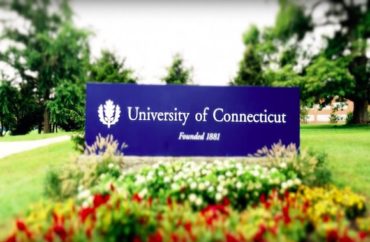 State’s lawyer repeatedly gets facts in the record wrong
State’s lawyer repeatedly gets facts in the record wrong
Last week we reported on a federal judge’s approval of a temporary restraining order against the University of Connecticut for running an alleged sham trial against a student accused of rape.
U.S. District Judge Michael Shea said the taxpayer-funded university deprived the student the opportunity to mount a “meaningful defense.”
The order was released just hours after a telephone status conference with the parties, including lawyers for “John Doe,” UConn and the state – and a newly released transcript shows Shea’s exasperation with the latter two.
Even though John was seeking to change the status quo by returning to his graduating class, and thus would have to make “a clear showing or a substantial likelihood of success,” the judge indicated UConn had basically made his argument for him.
‘Strictly speaking, that added condition was not in the policy’
“I’ll put my cards on the table,” Shea told Mary Kathryn Lenehan of the Attorney General’s Office:
I am troubled by aspects of this procedure, and in particular I think the thing that troubles me the most is the fact that the hearing body refused to hear from four of the plaintiff’s witnesses.
Indeed, UConn had blocked the testimony of other students in the car where “Jane Roe” first allegedly started “grinding” on John’s lap without asking for his consent. That matters because Jane denied “initiating any sexual contact” on John, raising a credibility problem for her other claim that John raped her later that night.
Shea noted that John’s reduced punishment – from expulsion to two-year suspension, assuming UConn agrees to readmit him – does not much change “the potential damage to his career prospects,” raising the due process requirements for his case:
[I]n light of the fact that the critical factual issue is ultimately who to believe … it would appear to me that the four witnesses, I guess I would say especially the two who were accompanying them in the car, really should have been heard from, frankly. …
[T]he suggestion is that at the hearing the victim, the alleged victim, did not bring any witnesses, and yet her roommate and the friend that she was with that evening were interviewed and the investigator relied on their statements so that the plaintiff never had an opportunity to confront those statements in any way. …
[G]iven all the circumstances that I’ve described, why not hear from the four witnesses at the hearing, which was the bulk of the plaintiff’s defense?
When the state’s lawyer Lenehan tried to argue that John’s witnesses had to give in-person witness testimony, Shea cut her off and read from UConn’s own rules, which put no conditions on how witnesses provide their statements.
“Strictly speaking, that added condition was not in the policy. Isn’t that true?” the judge asked. Lenehan had to admit it wasn’t.
Lenehan also came up short when Shea asked her to find evidence in the record for her claim that the investigator gave the student witnesses “the opportunity to submit a written statement or be interviewed or both.”
‘Oh, come on. I thought you were going to be serious about this’
It got worse from there. The state’s lawyer tried to argue the witnesses from the car “grinding” incident were irrelevant to the bedroom incident, and Lenehan appeared to be unaware that Jane had denied grinding on John at all.
Shea countered that claim, and John’s lawyer Michael Thad Allen pointed to the record where Jane made her denial, contradicting the witnesses in the car.
“I mean it would have been appropriate for the investigator to ask her about that” denial, the judge told Lenehan. “Do you not agree? She again responded that witness statements from the car were irrelevant, because Jane had admitted that she allowed John to touch her in the car.
“[Y]ou’re not answering my question,” Shea interrupted. At that point the state’s lawyer questioned whether “sitting on someone’s lap gyrating” was really “initiating sexual activity.” Allen chimed in that the investigator never bothered to ask Jane “if she initiated sexual contact.”
MORE: Shea halts UConn punishment for second time in a week
The judge put a halt to Lenehan’s evasion when she argued that two of the three car witnesses couldn’t actually see Jane grinding because they were in the front seat:
MS. LENEHAN: [One front seat witness] felt the chair moving.
THE COURT: It was more than that. He felt the knees in the back of the chair, and the roommate in the back said he didn’t even want to look because of what was happening.
MS. LENEHAN: Right, but then how did they have relevant testimony?
THE COURT: Oh, come on. I thought you were going to be serious about this.
Lenehan continued flailing, trying to argue that anything other than directly looking at Jane grinding on John’s lap rendered a witness irrelevant. Shea noted that Jane also denied inviting John “to come back into the car and to go to the dorm. These witnesses would testify to the contrary.”
The judge scolded Lenehan, representing the state of Connecticut, for not having “read the statements a little more carefully, frankly, if you’re going to kind of debate it with me … because you’ve got the facts wrong.”
She eventually agreed to stop debating Shea, and he responded: “Yeah, please don’t.”
Judge scolds UConn for bann… by The College Fix on Scribd
‘It wouldn’t have been true cross-examination anyway’
The judge next pressed Lenehan to explain how due process is served when the hearing officers relied on an investigator’s report with testimony from Jane’s witnesses, yet they didn’t show up for the hearing. (They did not observe any interactions with Jane and John, either.)
“And so the plaintiff in this case was never afforded an opportunity to confront what they had to say,” Shea said, noting that “it wouldn’t have been true cross-examination anyway.”
Lenehan could not answer except to say that procedure “has been defined in student discipline cases at university campuses” as comporting with due process. She again could not cite case law, and she conflated cross-examination with third-party questioning.
Shea called her out for the conflation even while noting that his federal appeals court, the 2nd Circuit, has not given universities the green light to deprive cross-examination to accused students facing serious sanctions.
Noting that John’s lawyer pointed to cross-examination as required by the 6th Circuit, the judge said “[m]aybe it is” in Shea’s court as well. “But assuming that the substitute procedure” of indirect questioning would satisfy due process, that did not even happen here, he said:
[G]iven the severity of the sanction here, how is it in compliance with due process that he’s not allowed to question or have somebody question at least statements that were being relied on … by the hearing officers by witnesses who weren’t even present?
Shea emphasized that neither Lenehan nor Nicole Fournier Gelston, UConn’s general counsel, was at the disciplinary hearing, by their own admission. Only John’s lawyer Allen was there.
He told the judge that the hearing panel refused John’s request to ask Jane why her friend would testify that Jane “came down the hall to ask permission” to have sex with John that night.
The panel also drew “no inference … from the fact that none of [Jane’s] friends came to support her” at the hearing, suggesting more credibility problems, Allen said: “Only my client’s witnesses were excluded when they had credible evidence regarding her own credibility.”
Also “disallowed,” the lawyer said: questions about “some sort of statement” that Jane submitted in April and mentioned in the hearing, which has still not been given to John. Allen confirmed to Shea that this April statement might constitute “impeachment material,” conflicting with statements Jane made in September.
‘This is a difficult case. I wasn’t thrilled to get it’
Shea referred to another UConn case he was handling at the same time, also involving due process but not sexual misconduct.
“I’ll be candid with you. This is a difficult case. I wasn’t thrilled to get it, but here I am,” he said. “I seem to be — I have [addressed] two UConn [temporary restraining orders] in the space of six days, so lucky me.”
Both the allegations and the sanction against John are “very serious,” and the judge also has “serious concerns” about whether John received due process at the hearing. He’ll grant the TRO to John, but “it’s a close call.”
Shea warned Allen that the best his client might get from the court is another hearing on John’s Title IX claim, “which we really haven’t talked about,” and which might go against him as well. That would mean “he will have done whatever work in this semester for naught.”
The judge suggested and the parties agreed to meet again at a preliminary injunction hearing Feb. 11-12.
The transcript shows the university’s “disdain for due process rights,” Samantha Harris, vice president of procedural advocacy for the Foundation for Individual Rights in Education, wrote in a blog post highlighting several relevant portions of the transcript.
Allen told Harris he wasn’t surprised by the university’s arguments at the conference, “because this was how they conducted the entire investigation and hearing”:
The person who did seem surprised was the judge, when UConn effectively admitted that their approach was simply to believe the accusing student no matter what the other witnesses had to say.
Read the transcript and Harris’s blog post.
h/t Robby Soave
MORE: Shea stops UConn for punishing students for protected speech


 State’s lawyer repeatedly gets facts in the record wrong
State’s lawyer repeatedly gets facts in the record wrong At this point in time the House of Representatives have forwarded their amended version of the Violence Against Women Act to the Senate. It is stalled because provisions governing the seizure of firearms among other concerns. I thought it would warrant a review of the House version would bring to light any changes favorable to males in any way in an act focused on women.
At this point in time the House of Representatives have forwarded their amended version of the Violence Against Women Act to the Senate. It is stalled because provisions governing the seizure of firearms among other concerns. I thought it would warrant a review of the House version would bring to light any changes favorable to males in any way in an act focused on women.